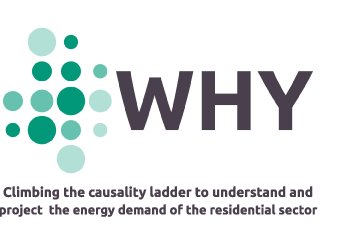Decarbonise the residential sector across new & existing homes in the EU
Recommendations for EU policy-makers
Heating, cooling, lighting and appliance use in buildings account for around 40% of the EU’s energy consumption and CO2 emissions. Heating residential buildings is responsible for about 65% of energy consumption, revealing an untapped savings potential. To align with the EU’s ambitious climate and energy goals, the buildings sector must achieve net-zero emissions by 2050, based on reducing its energy consumption, improving energy efficiency and utilising low or zero-carbon energy carriers. However, in many European countries, apart from decarbonising electricity, relatively little progress has been made towards these ends. WHY developed an enhanced modelling methodology based on the consistent integration of improved representation of human behaviour and technical/engineering modelling into the large-scale PRIMES model. This can help energy planners and policymakers to develop efficient, equitable and sustainable policies to decarbonise the European building stock by 2050 alleviating potential regressive impacts, especially on low-income households (e.g. energy poverty).
This Policy Brief presents key lessons from the WHY project to accelerate energy efficiency and decarbonise the residential sector across new and existing homes in the EU.
Our policy messages, based on the results of the WHY project, include guiding categories relevant to factors such as behavioural change, building-level technical change, pathways to net-zero buildings and/or a social impact assessment.(...)
While the results captured during the WHY project display some key insights for the European energy future, it is also worth noting that the three years of the project were unprecedented with COVID-19, Russia’s invasion of Ukraine and the preceding energy crisis. The structure of the policy brief spotlights how the WHY project results can contribute to relevant policies, while also looking at further policy recommendations that can enable the progress of the just energy transition in Europe and globally.
The WHY project investigated these demand-side issues by integrating behavioural modelling and technical building-level modelling to create the WHY Toolkit, which integrates a causal model to improve our understanding of household behaviour with an improved household-level energy service model. The WHY Toolkit is soft-linked with the established PRIMES-Buildings energy system model to assess pathways and policies to decarbonise the buildings sector in the European Union by 2050.





